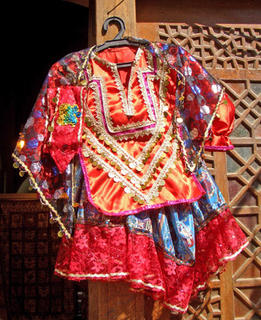 The Spirit of Allah
Khomeini and the Islamic Revolution
The Spirit of Allah
Khomeini and the Islamic Revolution
By Amir Taheri
Part biography and part political history, Amir Taheri’s “The Spirit of Allah” (a direct translation of Khomeini’s given name, “Ruhollah”) is at once a detailed examination of the revolution in Iran and a three-dimensional portrait of the man whose almost gravitational centrality to it made him one of the most important and controversial figures of the late twentieth century. Beginning with his ancestry and birth and continuing to within months of his death in 1989, the book documents Khomeini’s early struggles to establish himself as a religious teacher and his life in exile and growing influence over Iranian politics from abroad, culminating with his return to Iran and the first troubled years of the Islamic Republic.
Insights into the early life and private world of the self-proclaimed Imam paint a three-dimensional picture of a religious leader who himself saw little more than black and white. Apart from a sensitivity to poetry, two of his own works being reprinted as an appendix, the bleakness of the Ayatollah’s personal life, and the volcanic anger he directed against a world he saw as corrupted fed his single-minded ambition to oust the Shah. His intolerance of politicians and ignorance of economics were to be great strengths in justifying his uncompromising pursuit of this goal.
For Khomeini, the establishment of the Kingdom of God on Earth was to be the aim and the responsibility of the sanctified institution of the Mullahs, in particular, those who, like him, could claim a direct line of descent from the Prophet Mohammed himself. Obedience to the law of Islam, as interpreted by his pessimistic pietism, was to be imposed from above since it was essential that the spark of the Devil, which he believed to reside in all men, be tamed.
We find in Khomeini one who was not power-hungry but yet refused to allow the momentum of the multifaceted revolutionary movement to be directed by any ideology other than the radical morality that he advocated. This grim, single-minded determination was to justify acts ranging from the telling of knowing half-truths to divert his enemies to the execution of young girls.
As the emphasis of the work moves from personal history to the momentous events of the mid-1970s, Taheri documents the social, political, and economic factors that were undermining the Shah’s hold on power while never losing sight of the pivotal importance of Khomeini himself. Taheri, a newspaper editor, and journalist has brought together innumerable sources including speeches and documents written by Khomeini himself and numerous newspaper articles, eyewitness accounts and personal interviews to add minute detail and depth to a story which, twenty-five years on, is rapidly being distorted by discontent within Iran and ideology outside it.
Buy this book from Amazon
USA
UK
Japan
Iran Book Reviews
Books on Islam
© Iranvisitor.com
 The Heroin User's Handbook
The Heroin User's Handbook 







